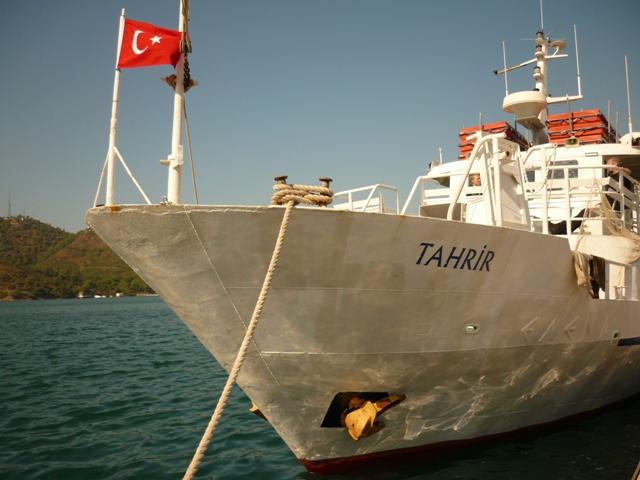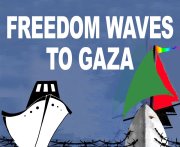-
Act now to defend today’s boats to Gaza
2 November 2011 | International Solidarity Movement, Gaza Two boats, called “Freedom Waves to Gaza,” are now traveling on the high seas to the besieged Gaza Strip. Their civilian passengers include people from five countries, including Palestinians from 1948. This is another non-violent attempt to break Israel’s siege, an illegal policy that has forced Gaza’s […]
-
Palestinian youth join boats set to challenge Israel’s siege of Gaza
2 November 2011 | Freedom Waves FOR IMMEDIATE RELEASE Palestinian youth join boats set to challenge Israel’s siege of Gaza Irish and Canadian boats in international waters on their way to challenge illegal siege policy Palestinian activists call for end to international complicity in Israel’s crimes Support actions taking place throughout the West Bank and […]
-
#FreedomWaves launches to bring Gaza humanitarian aid
by Ben Lorber 2 November 2011 | International Solidarity Movement, West Bank On Wednesday, November 2, two international ships left the Turkish harbor to carry humanitarian aid through the Israeli blockade of Gaza. The event, called ‘Freedom Waves for Gaza’, unites 27 activists from 9 countries, including America, Canada, Denmark, Belgium, Germany and Australia, alongside […]
Action Alert An Nabi Saleh Apartheid Wall Arrests BDS Bethlehem Bil'in Cast Lead Demonstration Denial of Entry Ethnic Cleansing Farmers Gaza Global Actions Hebron House Demolition International law Israeli Army Jerusalem Live Ammunition Nablus Ni'lin Prisoner Ramallah Rubber-coated steel bullets Settlement Settlers Settler violence Tear-Gas Canister Video


